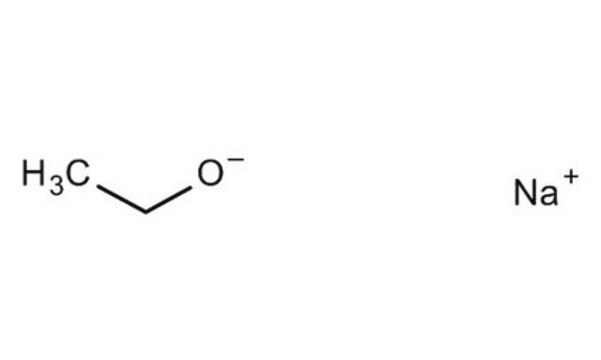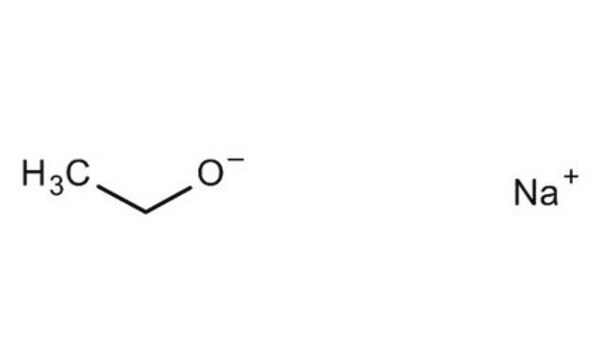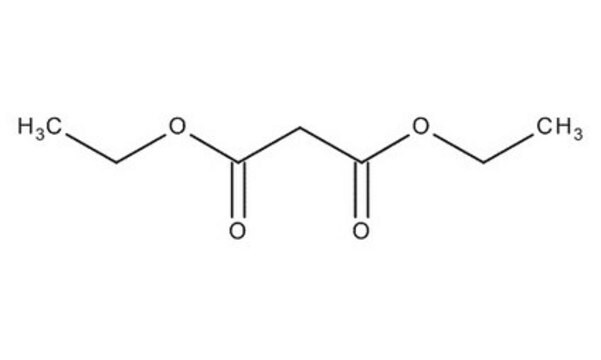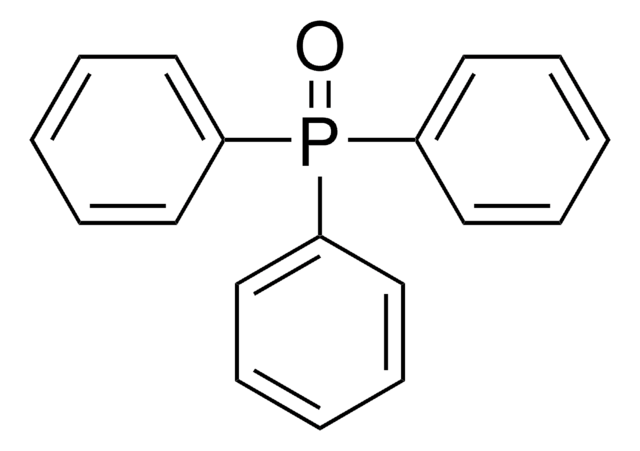71210
Sodium ethoxide
technical, ≥95% (T)
Synonym(s):
Sodium ethylate
Sign Into View Organizational & Contract Pricing
All Photos(2)
About This Item
Linear Formula:
CH3CH2ONa
CAS Number:
Molecular Weight:
68.05
Beilstein:
3593646
EC Number:
MDL number:
UNSPSC Code:
12352100
PubChem Substance ID:
NACRES:
NA.21
Recommended Products
vapor density
1.6 (vs air)
Quality Level
vapor pressure
<0.1 mmHg ( 20 °C)
grade
technical
Assay
≥95% (T)
form
powder
impurities
~2% Na2CO3 and NaOH
SMILES string
[Na+].CC[O-]
InChI
1S/C2H5O.Na/c1-2-3;/h2H2,1H3;/q-1;+1
InChI key
QDRKDTQENPPHOJ-UHFFFAOYSA-N
Looking for similar products? Visit Product Comparison Guide
General description
Sodium ethoxide (Sodium ethylate) is a sodium alkoxide. It has been synthesized by reacting sodium with ethanol. It undergoes decomposition in the presence of water to afford ethanol and sodium hydroxide. It is widely employed as a strong base in organic synthesis studies.
Sodium ethoxide is an alkoxide salt mainly used as a strong base in organic reactions such as deprotonation, dehydration and dehalogenation.
Application
Sodium ethoxide may be used as a base for the palladium catalyzed cross-coupling of aryl halides and alkenylboranes to synthesize arylated (E)-alkenes.
Sodium ethoxide may be used for the preparation of tricarbonylchloro(glycinato)ruthenium(II) (CORM-3).
Signal Word
Danger
Hazard Statements
Precautionary Statements
Hazard Classifications
Flam. Sol. 1 - Self-heat. 1 - Skin Corr. 1A
Supplementary Hazards
Storage Class Code
4.2 - Pyrophoric and self-heating hazardous materials
WGK
WGK 1
Flash Point(F)
86.0 °F - closed cup
Flash Point(C)
30 °C - closed cup
Choose from one of the most recent versions:
Already Own This Product?
Find documentation for the products that you have recently purchased in the Document Library.
Customers Also Viewed
Whitaker KS and Whitaker DT
e-EROS Encyclopedia of Reagents for Organic Synthesis (2001)
Stereoselective synthesis of arylated (E)-alkenes by the reaction of alk-1-enylboranes with aryl halides in the presence of palladium catalyst.
Miyaura N & Suzuki, A.
Journal of the Chemical Society. Chemical Communications, 19, 866-867 (1979)
James E Clark et al.
Circulation research, 93(2), e2-e8 (2003-07-05)
Carbon monoxide, which is generated in mammals during the degradation of heme by the enzyme heme oxygenase, is an important signaling mediator. Transition metal carbonyls have been recently shown to function as carbon monoxide-releasing molecules (CO-RMs) and to elicit distinct
Eagleson M.
Concise Encyclopedia Chemistry, 997-997 (1994)
Ali Reza Harifi-Mood et al.
Journal of pharmacy & pharmaceutical sciences : a publication of the Canadian Society for Pharmaceutical Sciences, Societe canadienne des sciences pharmaceutiques, 7(1), 88-91 (2004-05-18)
Variable-Temperature Kinetics has been used to obtain the rate constants of the reaction at various temperatures during one kinetic run. Pseudo-first-order rate constants for the transesterification of procaine with aliphatic alcohols ethanol, n-propanol and tert-butanol were obtained by the fluorescence
Our team of scientists has experience in all areas of research including Life Science, Material Science, Chemical Synthesis, Chromatography, Analytical and many others.
Contact Technical Service











